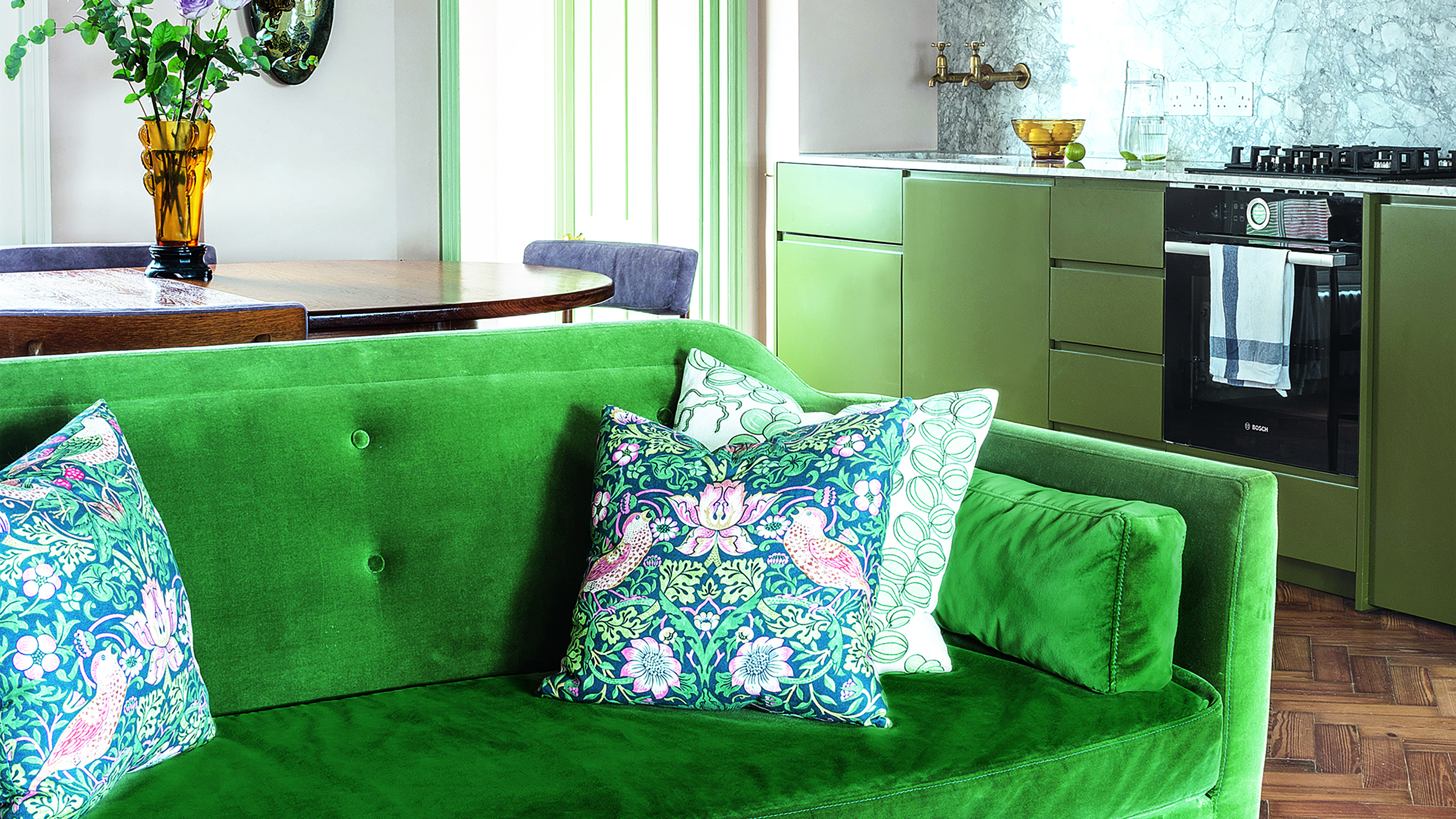
Kitchens are no longer just a functional space. Once dedicated to cooking and storing food, kitchens are now used to relax, work and even eat your food as well as prepare it.
Kitchens have become multi-functional, and with it kitchen layouts have developed from traditional rooms fit for purpose into fluid spaces used whatever else you choose. From open-plan kitchen diners to studio flats and breakfast bars, kitchen spaces and how we use them have changed. But should you put a sofa in one?
Some suggest a sofa is the perfect seating option to cosy up a kitchen space, but others question its practicality and whether the size of a sofa might not fit with a standard kitchen layout. A large open-plan kitchen living room with a sofa could create a sense of unity. In a small kitchen space, however, barstools or a small dining set are advised as the better option.
To help decide whether a sofa should go in a kitchen - or not - we’ve spoken to the experts for their thoughts on the modern kitchen idea.
Should you put a sofa in a kitchen?
The interior designers, kitchen experts and pinterest posts are all quite clear on the answer: it depends. Kitchen size, shape and layout should be considered first, as well as function, style and practicality.
We’ve broken down all the important things you should think about before you set your sights on one of the best sofas out there.
1. Size
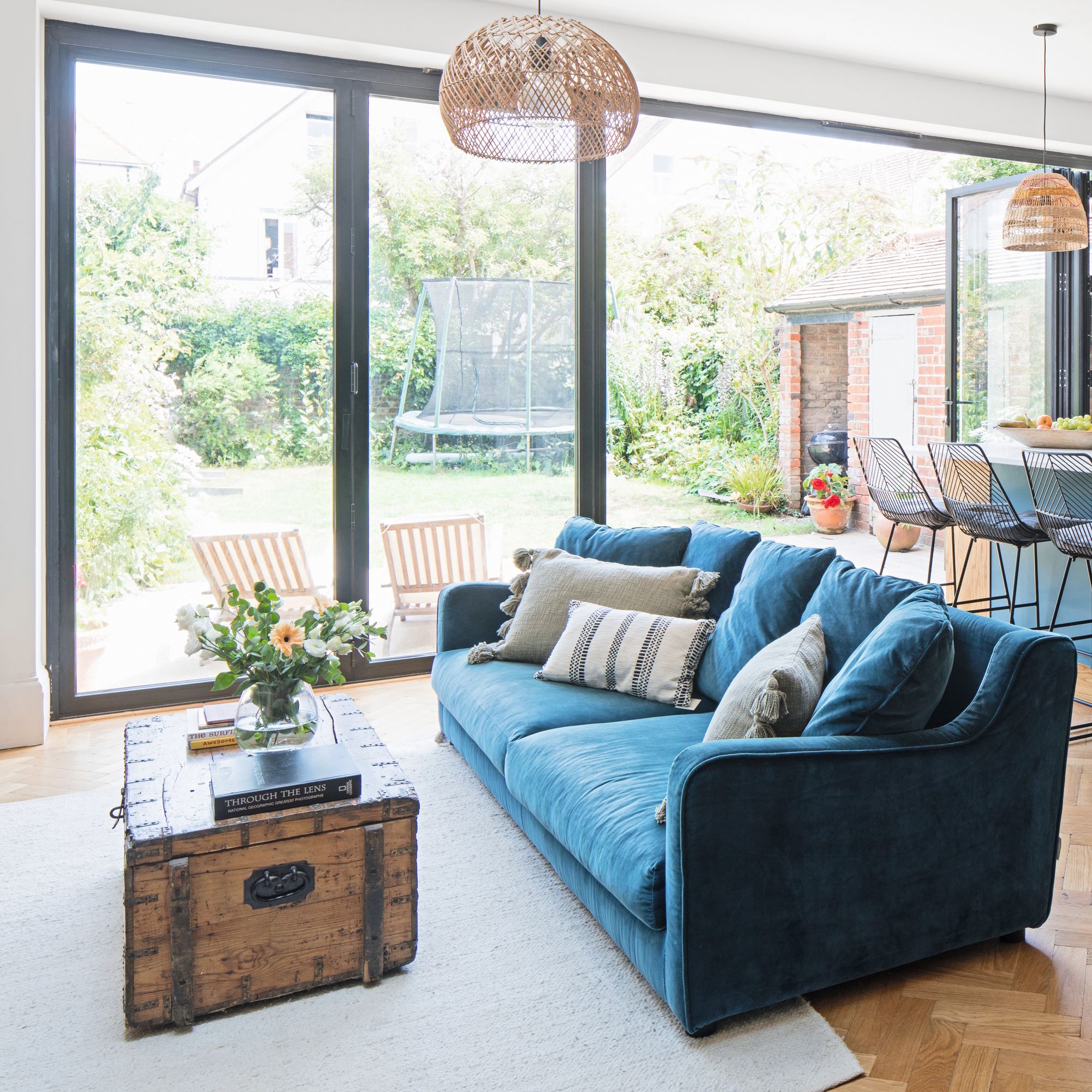
Kitchens come in all sizes. Yours might be large and spacious, small and compact or something in between. Either way, it’s worth taking some measurements and judging whether a sofa can actually fit in your kitchen first.
If you have plenty of room, putting a sofa in a kitchen can help zone out a space. Designated a specific area within the kitchen to relax and unwind will preserve the functional integrity of a kitchen while offering a comfortable place to sit. And/or if you consider your kitchen to be quite stark with a lot of empty space to fill, a sofa will bring warmth and softness.
But if you simply can’t squeeze even a loveseat in your kitchen, a bench, bar stools or even a pair of armchairs might be better suited. Melissa Klink, interiors and kitchen expert at Harvey Jones suggests ‘upholstering and finding some stylish cushions to design a bench seat you can pull up to a cute table. Or choose a couple of chairs to double-up on function.’
2. Kitchen layout

Standard kitchen layouts have transformed over the years from traditional rooms dedicated to the preparation of meals to open-plan kitchen living spaces for the whole family to enjoy.
Tanya Rechberger, design development manager at King Living argues that ‘in open living spaces, integrating a sofa can create a seamless transition between cooking, dining and lounging areas, promoting social interaction and a communal atmosphere. Big, or small It can really enhance the kitchen’s role as the 'heart of the home' and ensure every space is utilised efficiently.
For the best of both worlds, Tanya recommends choosing a modular sofa, which can be rearranged into different configurations that suit different kitchen layouts.
3. Seating needs
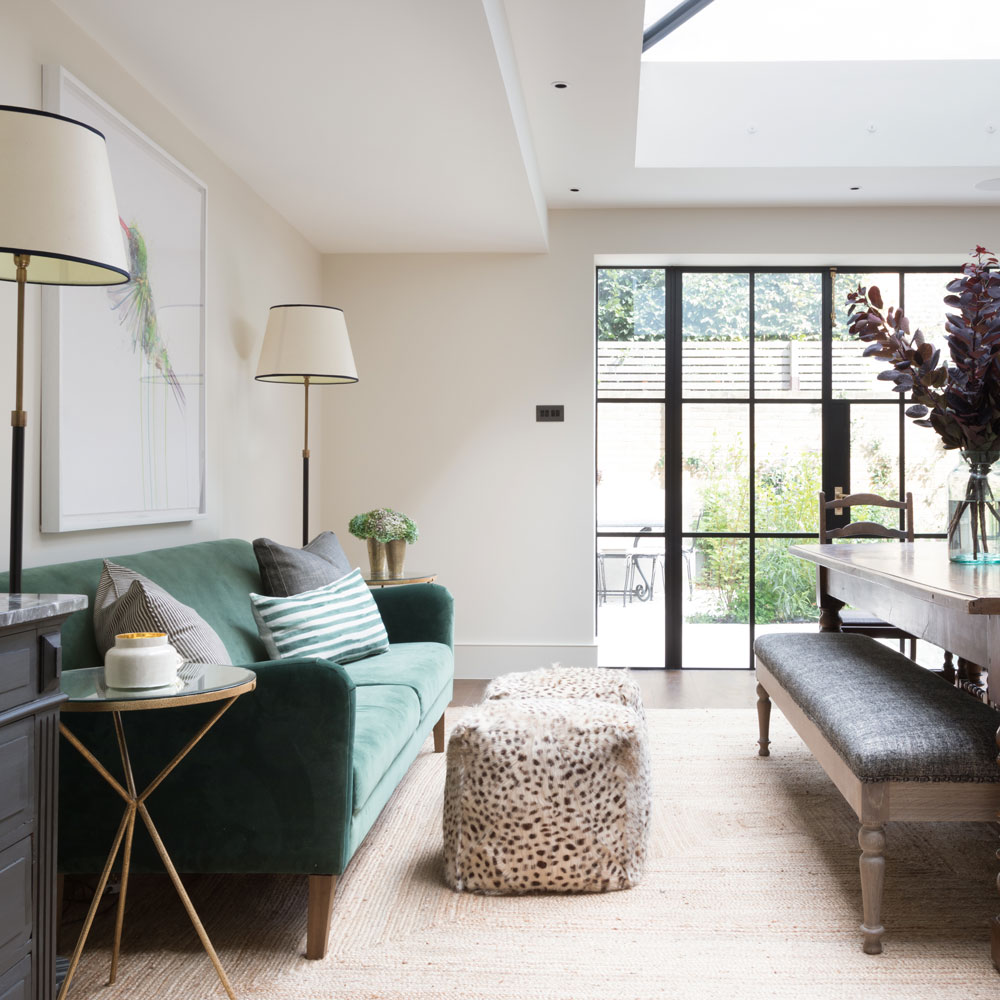
Whether you choose to cook, eat, clean, work, relax or play in your kitchen, it still has to serve its purpose as an efficient meal preparation area. As Tanya states, ‘kitchens are designed to maximise efficiency.’ You should therefore evaluate what a sofa adds to your current kitchen set-up.
For example, cooking can be a lengthy process and having a cosy spot to take a break can be a game-changer. Gabrielle Marie Yap, culinary entrepreneur at CarnivoreStyle explains ‘a sofa provides that much-needed respite, whether you're waiting for something to bake or just need to rest your feet while still monitoring the oven.'
'This is especially true for those of us who spend hours in the kitchen experimenting with recipes or preparing elaborate meals. It's about creating a space that’s not just about utility but also about comfort and enjoyment.’
4. Like to host? Let your guests rest too
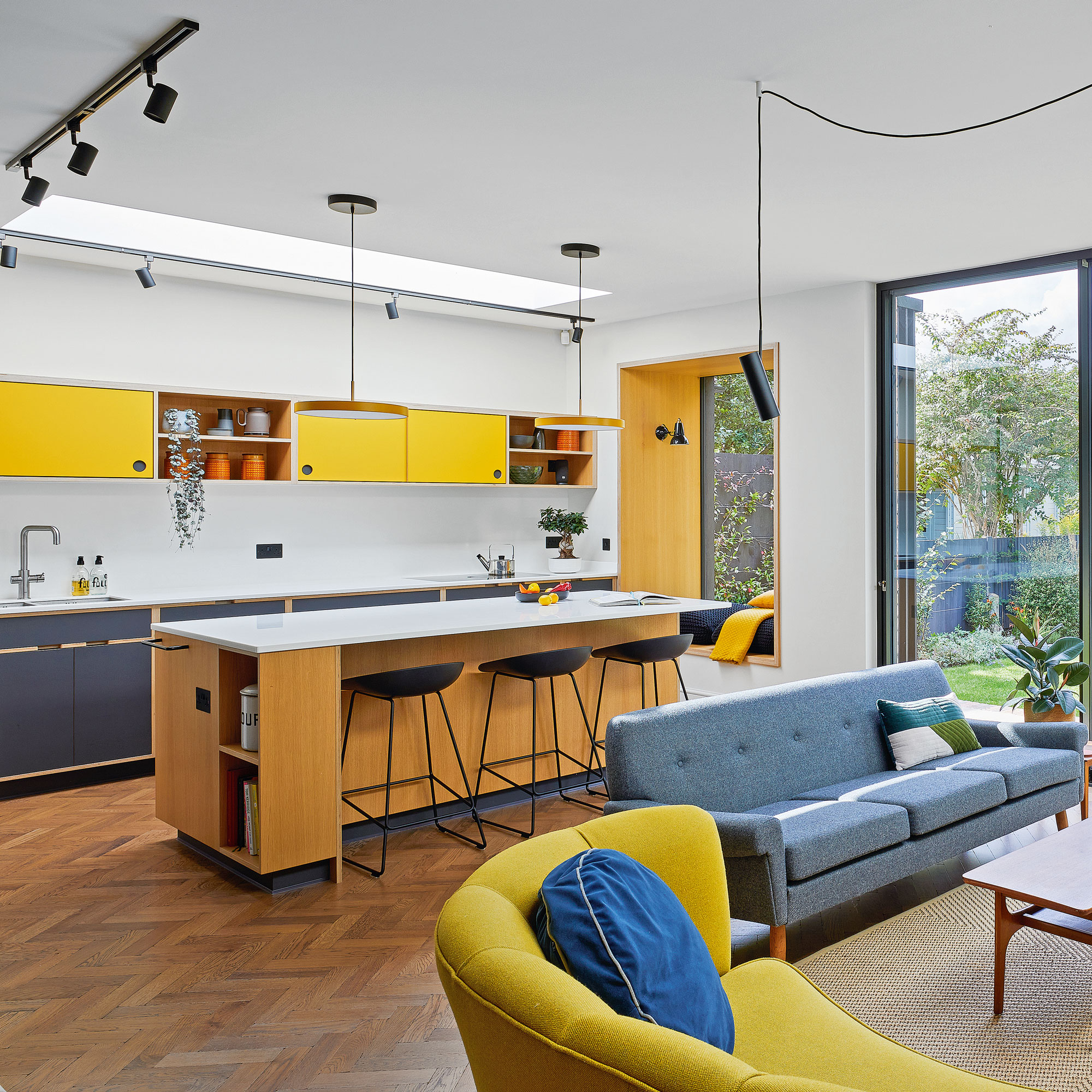
If you like to host regularly, Victoria Foster, interior stylist at ScS states ‘having a sofa in the kitchen means that your guests can really sit back and relax whilst you’re cooking or making drinks. Ideally you should place the sofa facing towards the kitchen space if you can for this reason - to create a space where everyone can interact.’
‘It can bring new life to a kitchen, creating a more informal space for cooking, perhaps with a more formal dining room for dinner parties.’ adds Summer Obaid, director & head of design at Abstract House.
5. Material and practicality
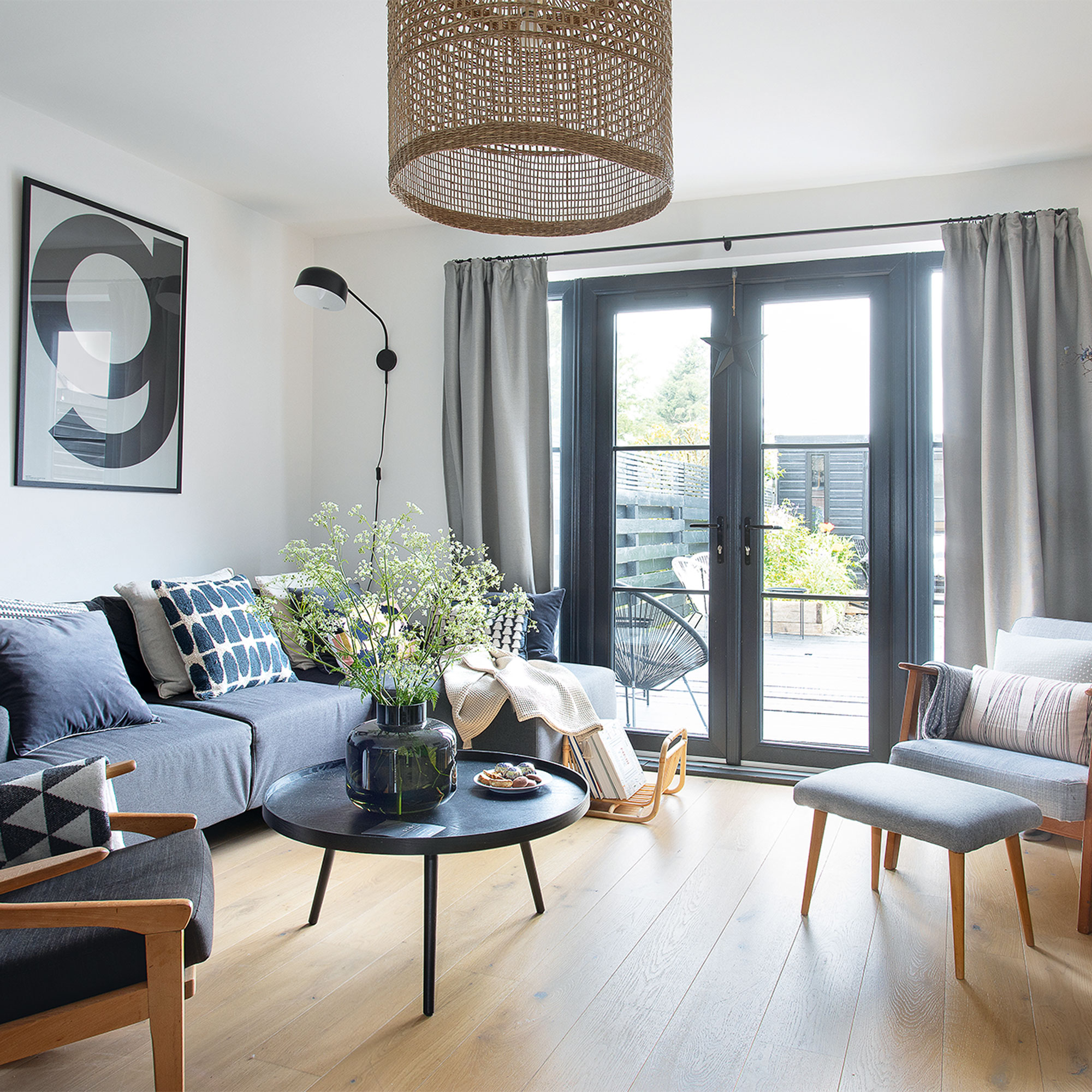
A sofa in close proximity to the kitchen is going to need to be cleaned frequently. You should keep in mind kitchens can be a high-traffic area with potential for spills and messes. This means material matters. A cream boucle sofa might look the part in your neutral schemed home, but gravy stains and bread crumbs will be quite hard to remove.
‘Sensitive fabrics like velvet or suede can often absorb smells, so may not be the best choice for a busy kitchen.’ adds Victoria. ‘It’s worth thinking about this factor when choosing your cushions or throws too.’
Darren Watts, showroom development and design director at Wren Kitchens advises to opt for durable, easy-to-clean materials that can withstand the rigours of everyday use.’
If you have little ones, Tanya recommends 'getting a sofa with machine washable covers and keep a care kit on hand to clean up any spills immediately to prevent damage.’
6. Is it in keeping with the style of the space?
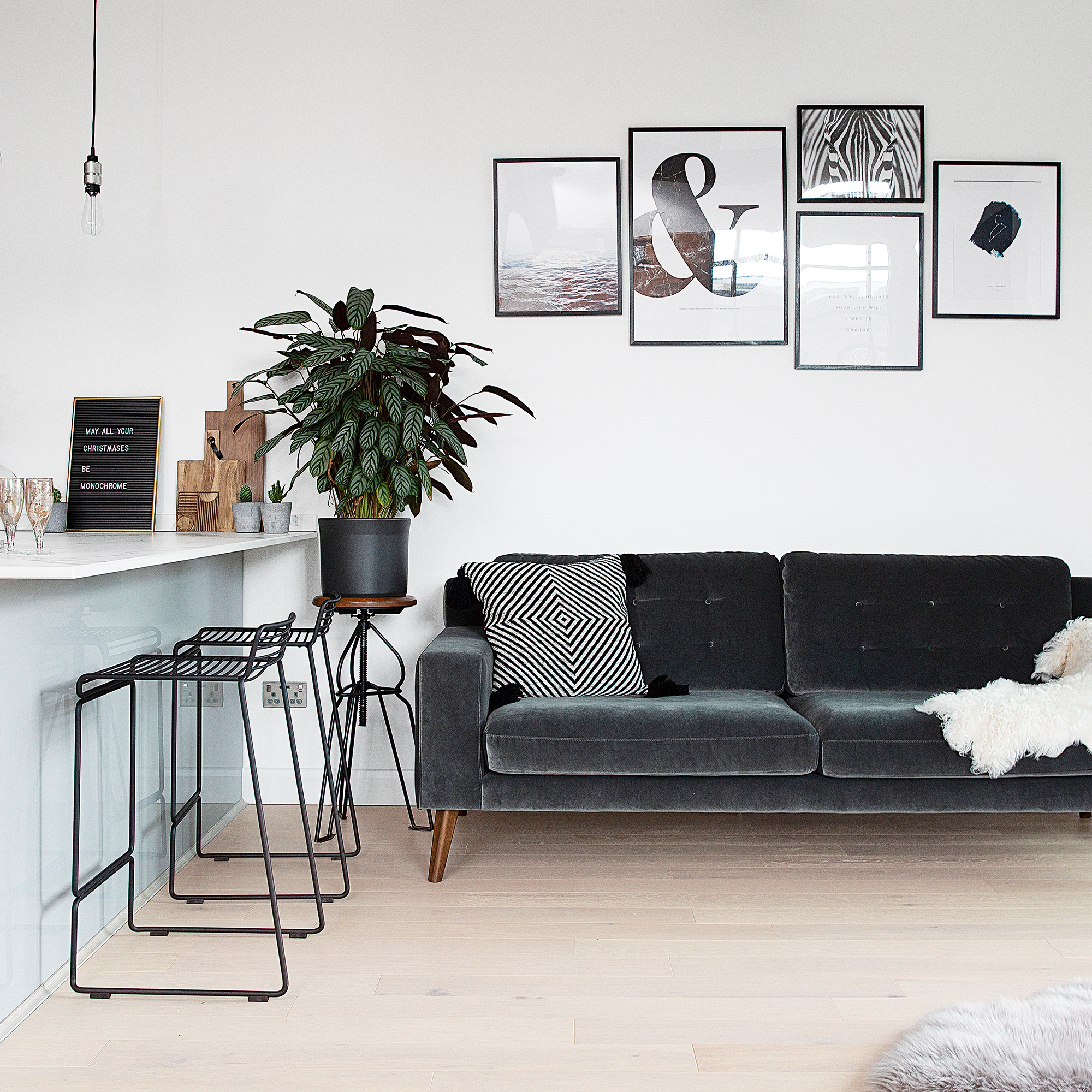
After you’ve evaluated whether it’s actually possible to put in your kitchen set-up, it’s worth wondering how well it would actually look there. Switching out traditional seating that’s in-keeping with the style of your property can throw-off its entire aesthetics.
If your current kitchen is verging on farmhouse, a banquet or nook might work better for instance. For modern kitchen designs, a breakfast bar with stools would create a more streamlined look.
FAQs
Should you put a sofa against a wall?
As with most interior design questions, there are no right or wrong answers. Whether you should put a sofa against a wall - or not - depends on your kitchen layout, size and shape. Tanya Rechberger, King Living design development manager suggests ‘placing a sofa against a wall in smaller kitchens helps to maximise the usable square feet’. It can keep the central area of the room open and accessible.
However, Victoria Foster, interior stylist at ScS argues putting a soft against a wall ‘can often have the opposite effect and make the room feel smaller. This is because it can make the space feel more closed in and less open and airy.’
‘If you have the space I’d recommend moving your sofa away from the wall as it can make the space feel more luxurious and the sofa more expensive,' says Victoria. 'A huge living room isn’t always essential to be able to do this, all you need is to be able to bring it away from the wall by around 30cm to give the same effect and allow the sofa to breathe. If possible, position shelves or a console table directly behind to add dimension to the space.’
What is the 2 3 sofa rule?
Can’t decide whether a sofa might be too much of a squeeze, or just not the right width for a space? The 2-3 sofa rule is a great guideline for arranging sofas and seating for optimal functionality and aesthetics.
'The 2:3 sofa rule refers to the idea that larger items of furniture should take up two-thirds of the room to ensure a pleasing appearance,' explains ScS stylist Victoria.
'In other words, a sofa should be no longer than two-thirds of the length of the wall that it is positioned along. If the wall your sofa is against is on the smaller side, try opting for a corner sofa, which will provide extra space for seating without overwhelming the space.’
Have you been convinced to add a spot for lounging into your kitchen?







